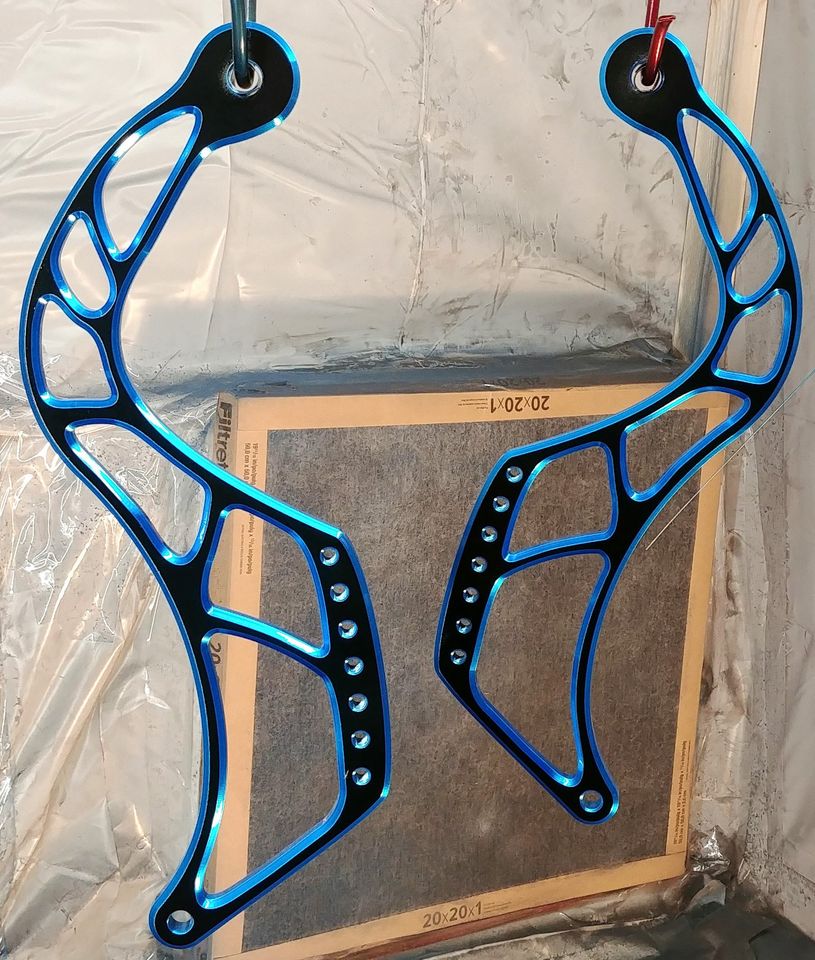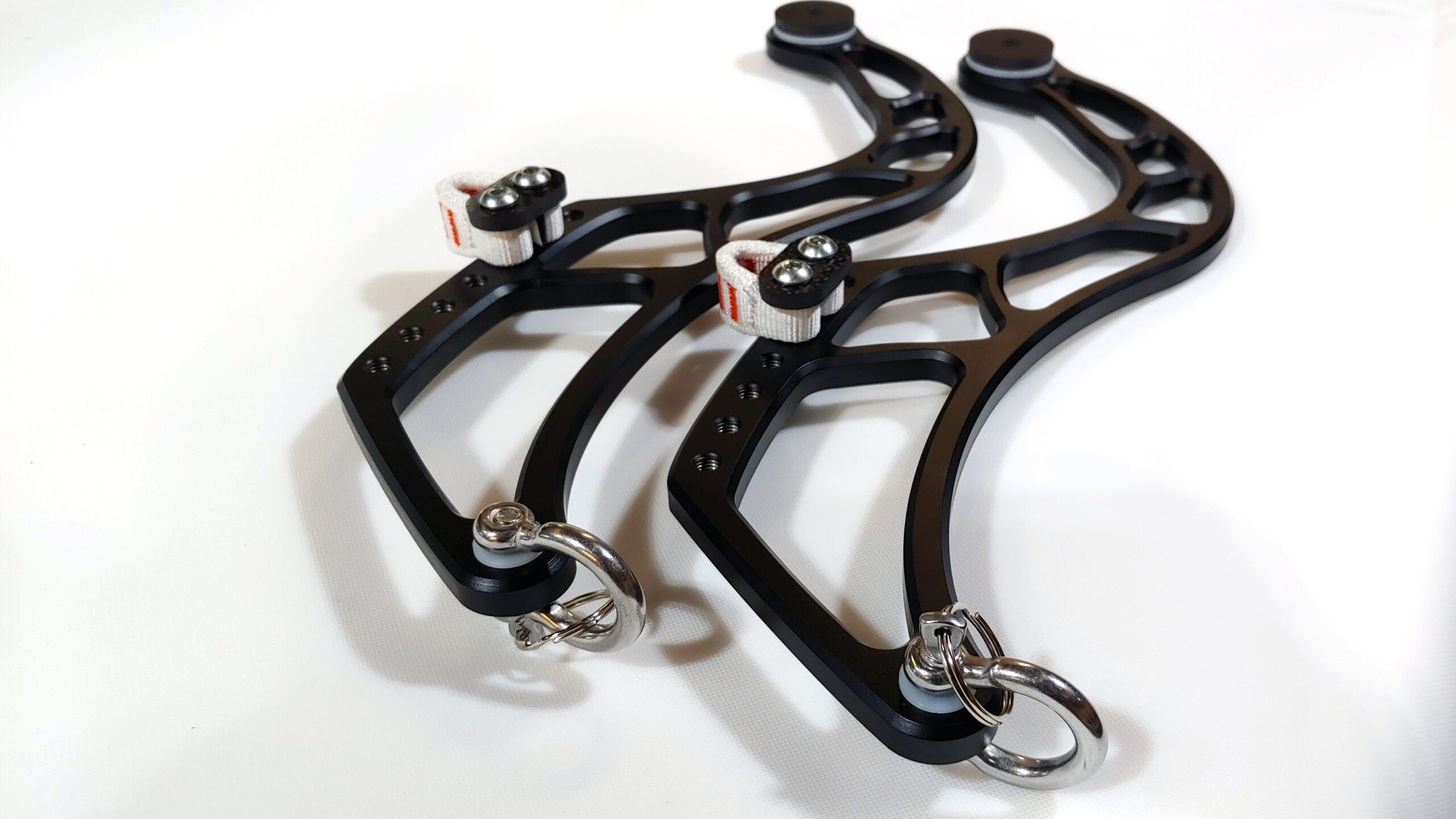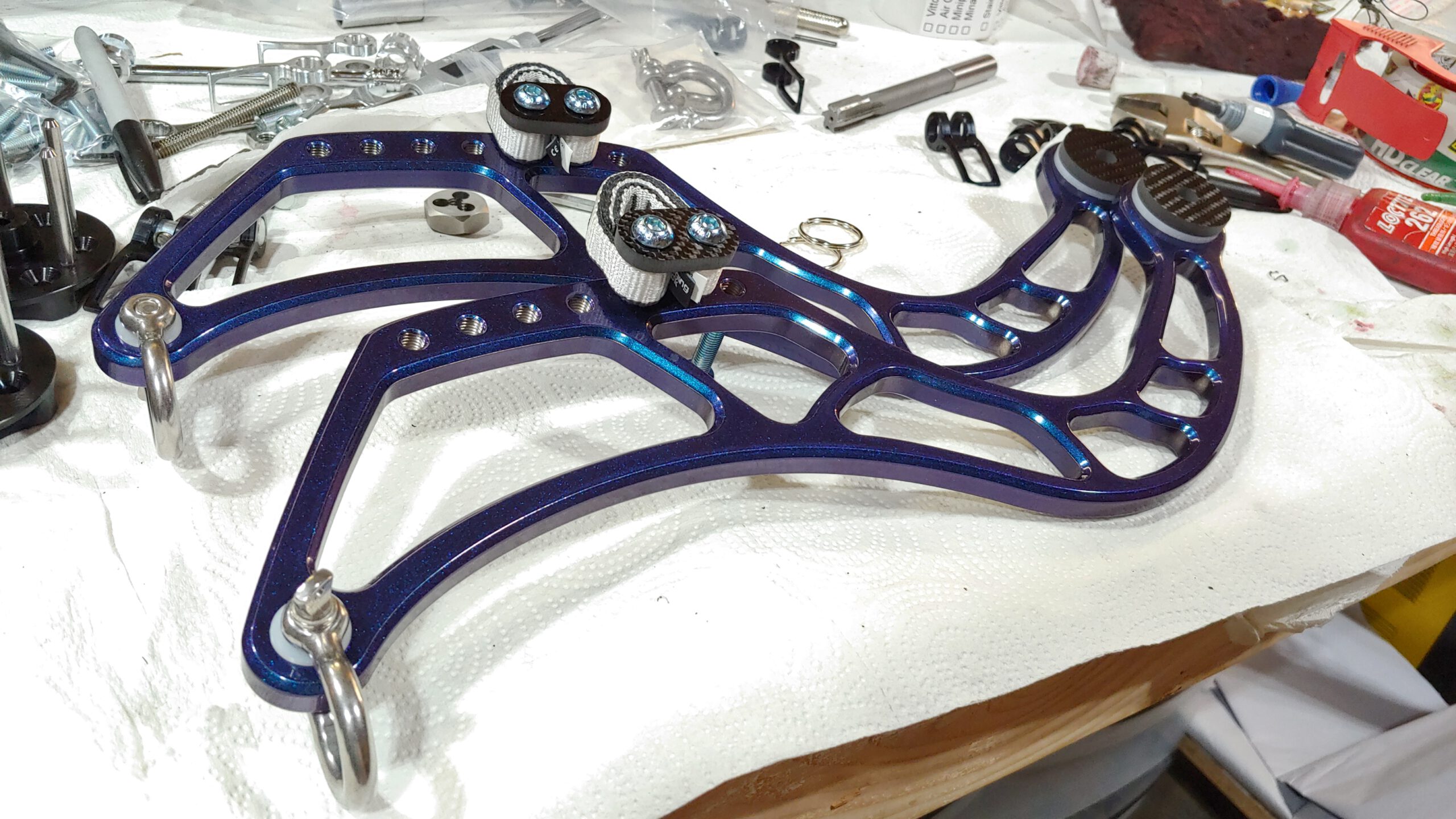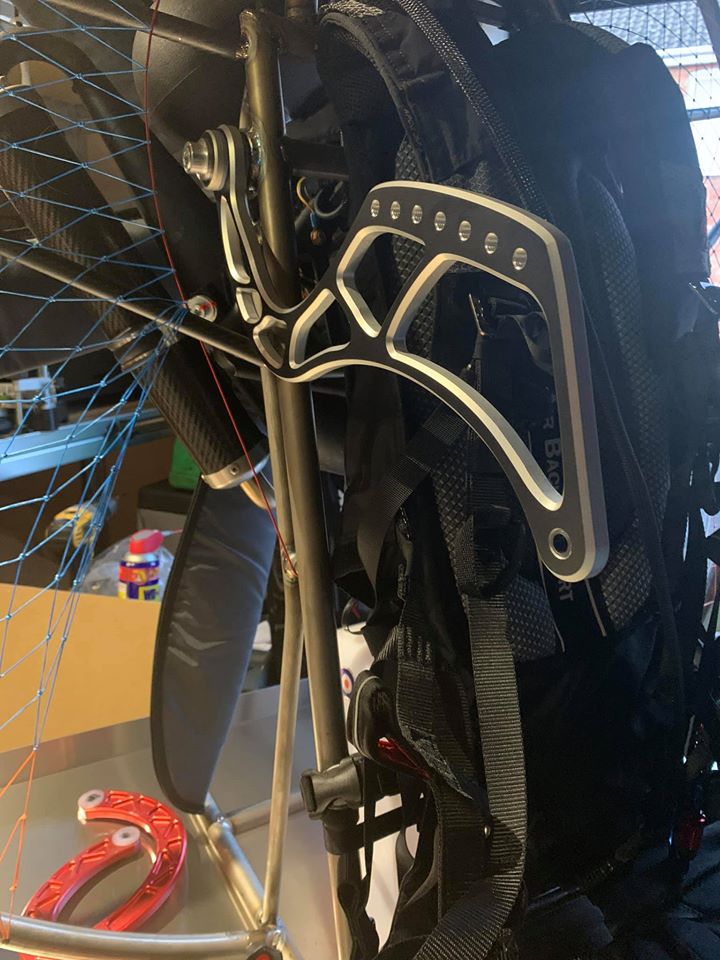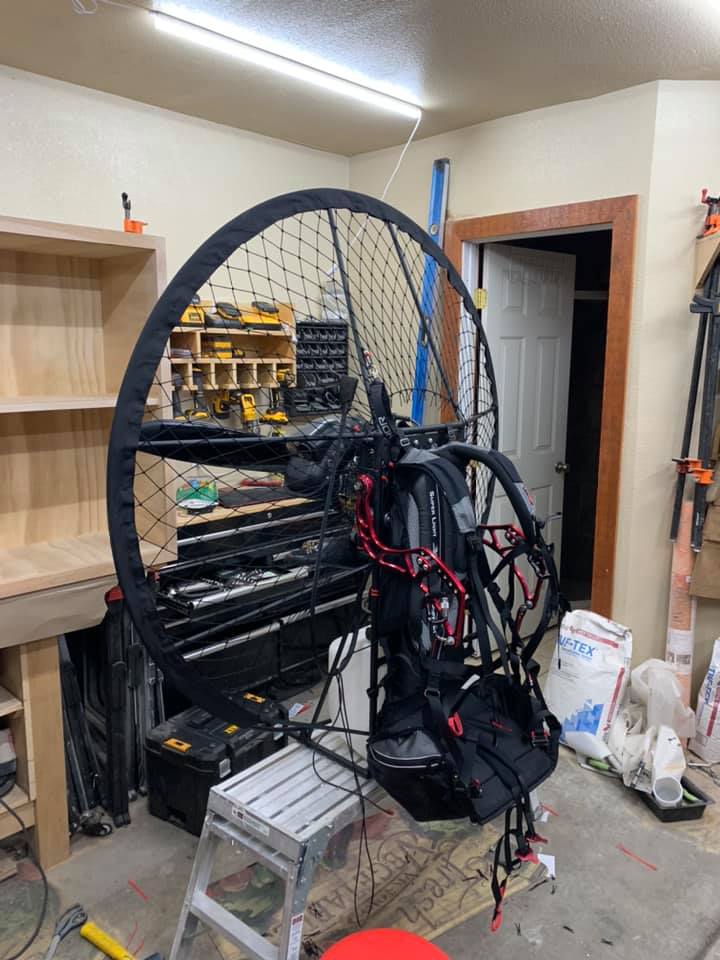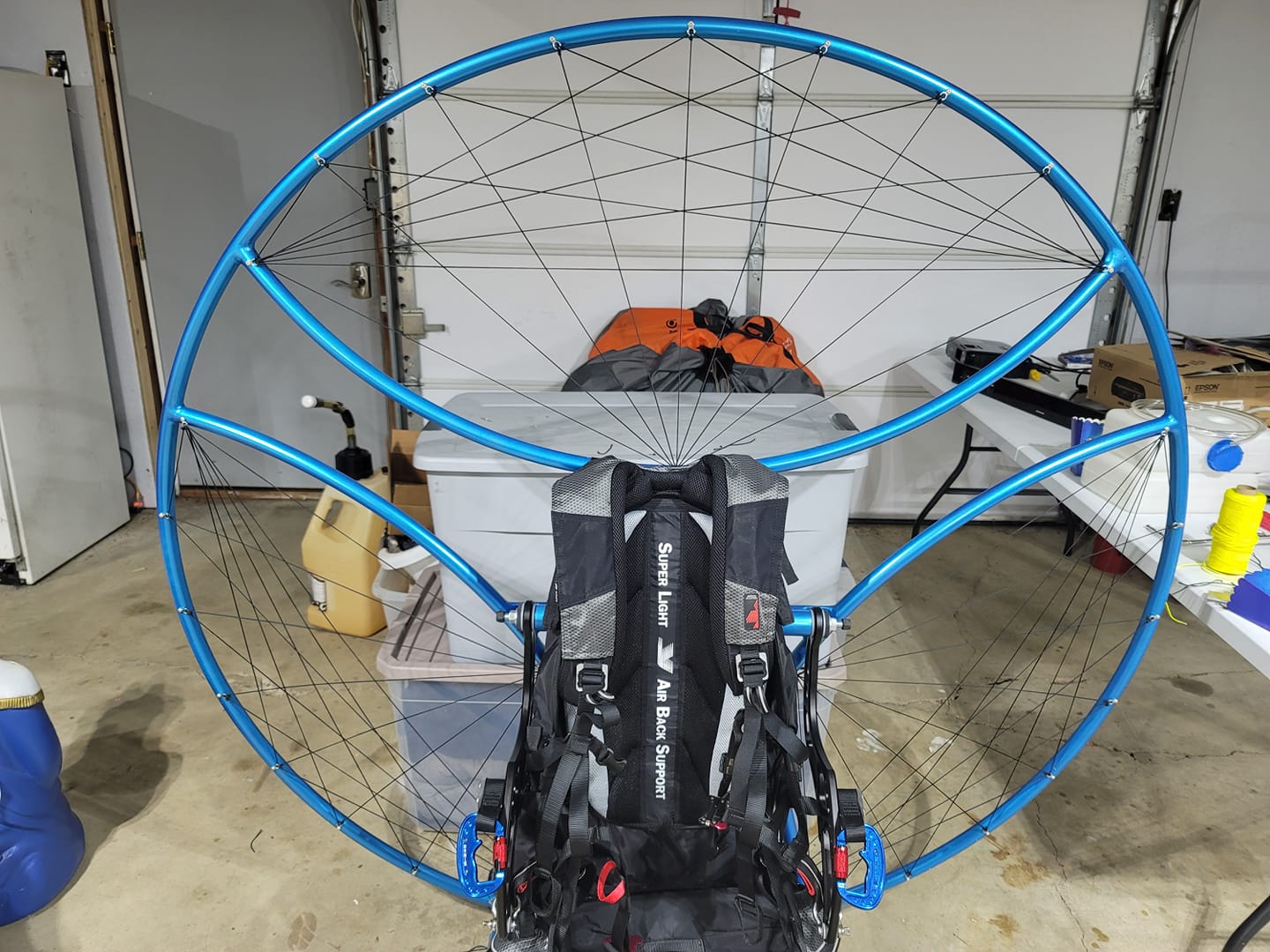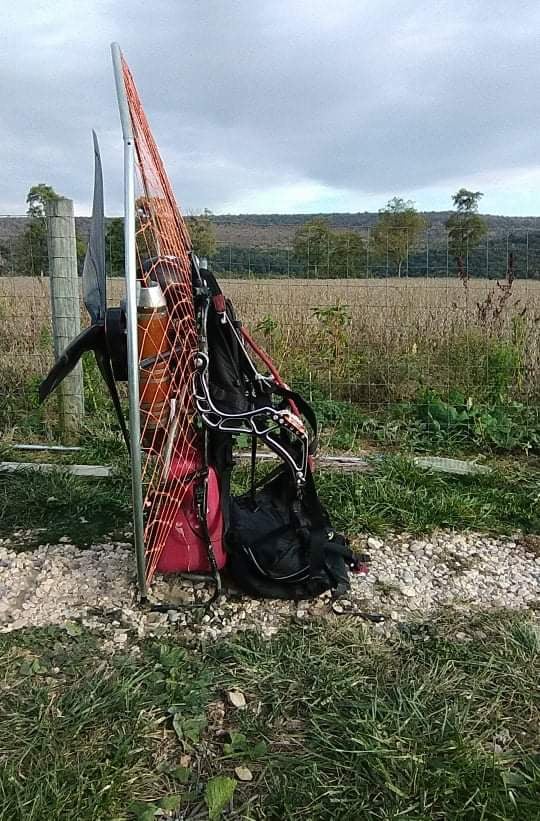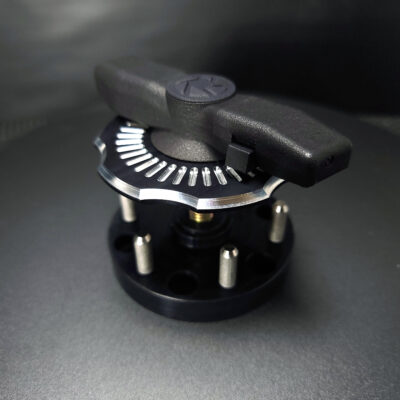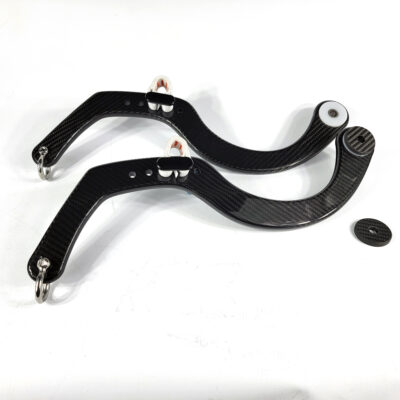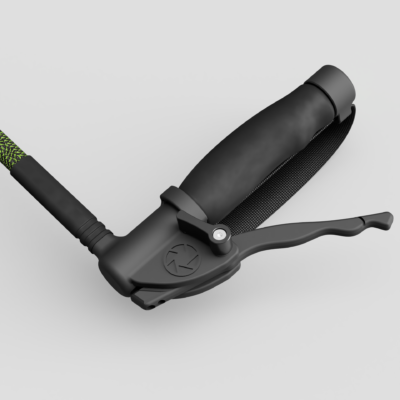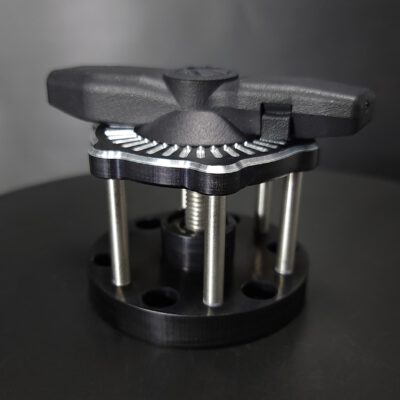Iris Paramotor Swing Arms
$425.00
Truly engineered and tested swing arms for even the most demanding pilots.
Our swing arms had one goal in mind: to never be the weak link in the system. They have been engineered using shape optimization technology with weeks of work in simulations to proof a design that can withstand forces beyond what even the most aggressive acro pilots achieve. After the design was perfected, it was put through destructive testing and passed the initial design target. A small change was made to overshoot that target without additional weight achieving a breaking strength that is higher than testing standards for acro paragliders (12g). During destructive testing, the arms suffer twisting/buckling but after the event still continue to safely support 1300+lbs of force making them stronger than many swing arms on production units even after they fail.
These swing arms are not compatible with all frames and some frames require slight modification (drilling out the mounting hole) to fit. As a general rule, any frame that uses a mounting bolt to hold the swing arm (P2F, Air Conception, SP140, MacFly, SkyMax and similar) are compatible so long as there is not a hoop spar directly below the mounting point (for example, the swing arms are not compatible with MiniPlane frames).
Key features:
- The swing arm features a oil bronze bushing which rigidly bolts to the frame so the swing arm pivots on the bushing rather than the bolt. The bolt never experiences any wear and is used as a proper fastener (being torqued to the frame).
- Riser offset blocks allow for torque compensation and feature a very clean strap layout which keeps the carabiner close to the swing arms and always oriented correctly.
- 5/16 (8mm) D-Shackles which feature a fiber reinforced nylon bushing (no metal on metal contact)
- Slippery Plastic Cushions sandwich the swing arm to the frame giving it vertical support and dampened movement
- Absolutely beautiful customizable color combinations
Installation:
- Our swing arms are designed for the bushing to be coupled to the frame so the swing arm moves on the bushing. You must tighten/torque the mounting bolt completely during installation.
- Riser offset block bolts should be nice and tight and torqued to about 18nm on our aluminums wing arms.
- Riser offset blocks are used for torque compensation. They should be installed on the right side (pilot perspective) of the swing arms for belt-driven engines (counter-clockwise prop rotation) and on the left side (pilot perspective) for gear-driven engines (clockwise prop rotation).
- We recommend using 3/4″ double-sided Velcro around the carabiner straps wrapped around several times to keep carabiners vertical from hitting the swing arm and damaging the powder coat.
- We recommend using quality carabiners. The two best options are AustriAlpin powerfly inox for stainless steel OR Edelrid Forsas or Alias for aluminum.
Specs:
Please note: the following parameters were achieved using swing arms suspended from front/rear connection point freely and loaded by the carabiner strap through the riser block in the vertical orientation. Although this is a good test which loads and twists the swing arms, it does NOT guarantee operation in certain situations. For example: if the paraglider is unloaded during a failed maneuver and the swing arms are loaded completely sideways. We are confident that these swing arms are some of the strongest on the market but there is no way to predict how anything will behave under irregular conditions. As such, we recommend only the most experienced pilots do high-G aerobatics on these swing arms and hold no responsibility in the event of a failure.
- max recommended loading: 3200lbs (max 12g for 267 lb all-up weight)
- tested failure point 3854lbs (max 12g for 321 lb all-up weight)
| Weight | 3.5 lbs |
|---|---|
| Dimensions | 18 × 12 × 2 in |
| Color | Flat Black, Matte Black/Clear, Black/Anodized Red, Purple Spectrolite(blue/purple colorshift), Purple Spectrolite/Clear, Black/Candy Peeka-Blue, Black/Candy Red, Uncoated |
| Mounting Hole Size | 3/8" (recommended, 10mm, 8mm (minimum) |


